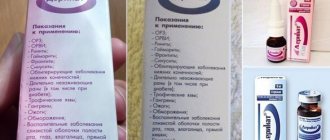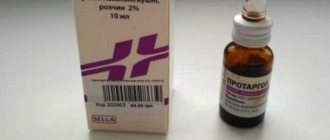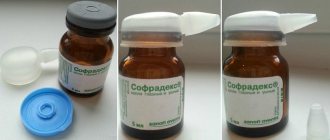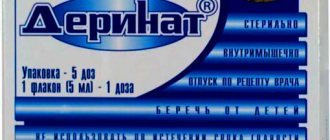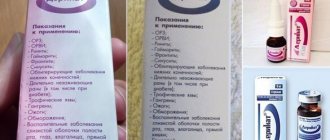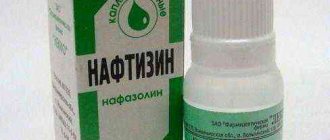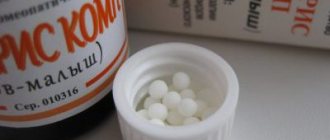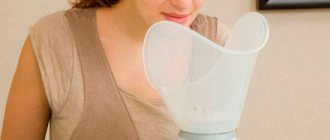Tonsils are natural defenders in the body, which are part of the immune system and consist of lymphoid tissue; they recognize infections and viruses and actively fight pathogenic microorganisms when they enter the nasopharynx. There are 8 such tonsils in humans, and one of them will be discussed in this article - the nasopharyngeal tonsil or adenoids, or more precisely, we will look at methods of treating adenoids in children.
The child cannot breathe through his nose at night, and with 2-3 degrees of enlargement of the adenoids, even during the day. During sleep, the child sniffles, snores, and in severe cases, obstructive apnea may occur - when breathing stops and holds. The child's speech becomes unintelligible and his voice becomes nasal. The child's hearing may decrease, and otitis media and sinusitis often recur. Children with adenoids very often and more severely suffer from colds and viral diseases; they more often have bronchitis, pneumonia, tonsillitis, and sinusitis.
Diagnosis of adenoids in a child
It is impossible to see adenoids in a child simply by opening the mouth; for this, there are special diagnostic methods - examination with a mirror, X-rays, finger examination and endoscopy of the nasopharynx.
The digital examination is not used today because it is a painful and uninformative examination. X-rays are more accurate in determining the size of the adenoids, but are also not sufficiently informative in terms of the presence of an inflammatory process in the nasopharyngeal tonsil; moreover, even a one-time X-ray examination carries a radiation load on the child’s fragile body. The safest, painless and most informative modern method for diagnosing the proliferation of adenoids is endoscopy - in this case, the doctor and parents can see the whole picture on the monitor screen. The only condition for such an examination is the absence of relapse of inflammation of the adenoids; it should be carried out only if the child has not been sick for a long time, otherwise the clinical picture will be false. This may lead to unnecessary worry and possible referral for surgery when this can be avoided.
Pharmacological properties
First, I want to tell you everything about this drug: what it consists of, for what purposes it is prescribed and in what cases it is contraindicated.
The immunomodulator Derinat is used during the period of a child’s illness with acute respiratory viral infections, acute respiratory infections, and inflammatory processes of the throat and nose.
The main active ingredient of this product is sodium deoxyribonucleate.
This substance strengthens the human immune system, as a result of which the body copes with pathogenic microflora more easily and quickly.
Under its influence, an accelerated process of tissue regeneration occurs. In addition, Derinat perfectly relieves inflammation, eliminates swelling, allergies and provides protection for healthy cells.
This medicine is available in the form of drops and ointments. Prescribed to patients of any age category.
Myths about adenoids
Myth 1 - After the removal of the adenoids, the child’s immunity decreases - yes, it decreases, but only after the operation and within 2-3 months after the adenotomy, it is restored, since after the removal of the nasopharyngeal tonsil, the tonsils of Valdeer Pirogov’s rings assume protective functions. Myth 2 - If the tonsils are enlarged, then the child often suffers from viral and infectious diseases due to their enlargement. Quite the contrary, because a child, for some internal and external reasons, experiences frequent ARVI, each time the baby’s lymphoid tissue increases more and more. Myth 3 - Removal of adenoids at an early age leads to their secondary growth. Repeated enlargement of adenoids most likely depends not on the age of the children, but on the quality of the operation; 20 years ago, when operations were performed almost blindly, particles of lymphoid tissue in 50% of cases remained not removed, which increased the likelihood of their further growth. Modern endoscopic operations help the doctor see the entire clinical picture and secondary growth of adenoids is now much less common, in approximately 7-10% of cases. Myth 4 – Adults do not suffer from enlarged adenoids. There are cases that adenoids do not shrink with age, and similar operations are also performed in adults.
Causes and provoking factors
Otolaryngologists identify the following main causes of the disease in childhood:
- the presence of pathologies of the upper respiratory tract with a chronic course;
- often recurrent damage to the tissue of the nasopharyngeal tonsil of inflammatory nature;
- various infectious respiratory diseases that recur in a baby more often than 1-2 times a month.
- negative hereditary predisposition;
- increased allergic background;
- state of immunodeficiency in the baby;
- severe pregnancy and birth injuries;
- general unfavorable environmental situation;
- uncorrected diet.
The growth of adenoid tissue can also occur after the baby has suffered a number of childhood infections, for example, measles, diphtheria, scarlet fever.
How to treat adenoids in a child - to remove or not?
Today, adenotomy is the most common surgical procedure in pediatric ENT practice. Indications for mandatory removal of adenoids are the following symptoms and concomitant diseases:
If a child experiences serious breathing problems through the nose, apnea syndrome appears during sleep, that is, holding the breath for 10 seconds or more, this is dangerous due to the occurrence of constant hypoxia of the brain and leads to a lack of oxygen supply to all organs and tissues of the growing body. If a child develops exudative otitis media, when mucus accumulates in the middle ear cavity and the child’s hearing decreases. For malignant degeneration of the nasopharyngeal tonsil. If overgrown adenoids lead to maxillofacial abnormalities.
If conservative treatment for at least a year does not produce a noticeable effect and adenoiditis recurs more than 4 times a year.
Adenotomy is contraindicated in the following cases:
If there is an infectious disease or a flu epidemic, surgery can only be performed 2 months after recovery.
Serious cardiovascular diseases.
Removal of adenoids is contraindicated for children with bronchial asthma and serious allergic diseases, since the operation aggravates the disease and worsens the child’s condition; treatment of adenoids with such pathologies is carried out only by conservative methods.
If after an examination it turns out that a child’s adenoids are enlarged and he suffers greatly from this, sleeps poorly, breathes mainly through his mouth, which prevents him from eating and sleeping normally, of course this requires treatment. In each clinical case, the method of therapy - conservative or surgical - is decided individually:
Choice of therapy method
When choosing between surgery or drug treatment, you cannot rely only on the degree of enlargement of the adenoids. With grade 1-2 adenoids, many believe that removing them is not advisable, and with grade 3, adenotomy is simply necessary. This is not entirely true, it all depends on the quality of the diagnosis; there are often cases of false diagnosis, when the examination is carried out against the background of an illness or after a recent illness, the child is diagnosed with grade 3 and is recommended to remove the adenoids. And after a month, the adenoids are significantly reduced, as they were enlarged due to the inflammatory process, while the baby breathes normally and does not get sick too often. And there are cases, on the contrary, with 1-2 degrees of adenoids, the child suffers from constant acute respiratory viral infections, recurrent otitis, sleep apnea syndrome occurs - even 1-2 degrees can be an indication for removal of the adenoids.
The child is often sick
If a child lives in a metropolis, goes to kindergarten and often gets sick 6-8 times a year, this is normal, and if he is diagnosed with grade 1-2 adenoids, but at the same time he breathes normally during the day, and sometimes breathes through his mouth at night, this is not 100% indication for surgery. Diagnostics, preventive procedures and complex conservative treatment should be carried out regularly.
Don't rush into surgery
If your attending physician insists on surgical removal of the adenoids, do not rush, this is not an urgent operation when there is no time for reflection and additional observation and diagnosis. Wait, watch the baby, listen to the opinions of other otolaryngologists, make a diagnosis a few months later and try all medication methods. Now, if conservative treatment does not produce a noticeable effect, and the child has a constant chronic inflammatory process in the nasopharynx, then for consultation you should contact operating doctors, those who perform the adenotomy themselves.
Dangers of not removing adenoids
It should be remembered that adenoids are removed not because the baby is often sick, but because overgrown adenoids do not allow breathing through the nose and lead to complications - otitis media, sinusitis, sinusitis.
Treat or remove?
If after surgery there is a relapse of the adenoids, this is an obvious sign that removal was not advisable, since it would be better not to operate, but to eliminate the severe immunodeficiency in the child. Many doctors contradict themselves, arguing that recurrent adenoids should be treated conservatively, then why remove non-recurrent adenoids, which are even easier to treat than recurrent ones. Therefore, when deciding whether a child needs to have his adenoids removed, you should think carefully; any surgical intervention on a child’s body has negative consequences and is not always justified.
Main symptoms
Frequent otitis in a child with adenoids is manifested by the following symptoms:
- significant hearing loss on the affected side;
- severe pain syndrome - the baby chokes from crying, his discomfort is so intense;
- rise in temperature parameters - up to 39.5 - 40 degrees;
- purulent masses may be discharged from the ear canal;
- dizziness and general weakness are observed;
- The child may also be bothered by decreased appetite, tearfulness, pain in the head and noise.
Frequent otitis with adenoids causes persistent hearing loss in childhood, even to the point of disability. Only timely diagnostic and complex treatment procedures can prevent such a serious complication.
Conservative treatment
In addition to the otolaryngologist, a child with adenoids should be examined by an immunologist, an allergist, a phthisiatrician, and an infectious disease specialist. Consultation and diagnosis with these doctors will help determine the true cause of the proliferation of adenoids and their inflammation, which can direct you to the right path of therapy. Conservative drug treatment includes a number of different procedures and the use of various medications:
Resort therapy is a very effective treatment for children with adenoids in the sanatoriums of the Caucasus and Crimea. Physiotherapy - laser therapy, ultraviolet irradiation, electrophoresis, UHF. Homeopathy is the safest and in most cases very effective method of treating adenoids today. Rinsing the nose and nasopharynx with various solutions Using topical antibiotics Using topical glucocorticosteroids locally in the form of sprays
Therapy for this disease is long-term, painstaking, and requires patience, perseverance and skill from parents. Moreover, the mother must carefully observe what helps the child, what does not, what causes allergies or worsens the condition. The selection of methods and medications for treatment must be individual, what helps one child may not help another. The only thing that helps everyone is surgery, but you should try all possible methods of conservative treatment and, if possible, avoid any surgical intervention.
Rinsing the nasopharynx in a child can be done using the Dolphin device. Sometimes even a few rinses of the nasopharynx can significantly improve the child’s condition. As rinsing solutions, you can use pharmaceutical sea salt without additives; dissolve 2 teaspoons of salt in a glass of warm water, strain and use the Dolphin device. You can also make a similar composition of sea water from table salt - 1 teaspoon of salt, 1 teaspoon of soda and 2 drops of iodine, also per glass of water.
You can use ready-made pharmaceutical solutions of sea salt in the form of sprays - Aquamaris, Quicks, Aqualor, Goodvada, Dolphin, Atrivin-More, Marimer, Allergol Dr. Theis, Physiomer.
You can use propolis to rinse the nasopharynx - dissolve 20 drops of an alcohol solution of propolis with 1/4 teaspoon of soda in a glass of warm water.
The pharmaceutical drug Protorgol is also used for adenoids, but its use helps only after thorough washing of the mucus, otherwise the effect will be insignificant.
Otolaryngologists sometimes recommend using Protorgol, thuja oil for adenoids, and Argolife. Instill Protorgol and thuja oil for one week, Argolife and thuja oil for the second week and alternate for 6 weeks. Before instillation, be sure to rinse the nose, then instill 2 drops into each nostril 2-3 times a day.
Often, complex therapy includes immunomodulatory drugs, local ones - such as Imudon, IRS-19 or general ones - Ribomunil, Dimephosphone. These drugs must be prescribed and under the supervision of the attending physician.
Sprays are also used for local treatment - Propolis spray, Ingalipt spray, and Chlorophyllipt.
In addition to washing and using thuja oil, Protorgol and Argolife, homeopathic treatment with the German remedy Lymphomyosot is very effective - this complex drug has a pronounced lymphatic drainage, anti-allergic, detoxifying effect. Take it orally 3 times a day, 5-10 drops for 2 weeks, such courses can be repeated periodically. As with any homeopathic treatment, there may be a slight exacerbation at first, in this case, as well as if any side effects occur, you should stop taking it and consult a doctor.
In addition to these drops, you can use homeopathic Job-baby granules. This is also a complex drug, with the use of which in many children even the most advanced stages of adenoids resolve, inflammation in adenoiditis decreases, and nervous excitability in children with adenoids decreases. Contraindications to their use are acute inflammatory processes in the nasopharynx - sinusitis, sinusitis.
Treatment should be long-term; homeopathic therapy differs in that only in the case of long-term continuous use of drugs is the effect achieved. For complete recovery, sometimes it takes a whole year; if there is an exacerbation of symptoms at the beginning of using Job-baby, it is recommended to interrupt its use for 2 weeks, then start again; if adverse reactions recur again, you should change the regimen - take the medicine less often, for example Take 2 days, 5 days off. During the treatment period, no vaccinations should be given. If such a primary deterioration occurs in a child, homeopathic doctors consider this a good sign, which means the body is rebuilding to improve its health.
Many parents are concerned about the question of whether it is necessary to remove adenoids when obvious signs of pathology appear. This topic causes a lot of controversy. To understand it, you need to understand where adenoids come from and why they are dangerous. The tonsils are located in the nasopharynx, forming a lymphoid ring. Like other formations of the lymphatic system, tonsils are immune structures and must protect the body from microbes. On the way of penetration, pathogenic microorganisms encounter tonsils, which ensure their neutralization.
Normally, lymphoid tissue is able to increase in size to enhance protection against infection. However, after the pathogens are destroyed, its size is restored, and the symptoms of nasal congestion and runny nose disappear. In the event of frequent attacks by infectious microbes, the lymphoid tissue does not have time to return to its previous size, since it is necessary to constantly maintain defense.
As a result of this, hypertrophied lymphoid tissue of the pharyngeal tonsil, called adenoids, leads to the appearance of symptoms typical of the disease:
nasal congestion: breathing through the mouth; snoring during sleep; nasal voice.
Note that adenoids are scary not because of their symptoms, but because of their complications, so if the pathology is complicated, the question arises whether it is worth removing the child’s adenoids. Otolaryngologists recommend delaying surgery in children under three years of age. This is due to the development of immunity and accelerated regeneration processes, which often leads to re-growth of lymphoid tissue. On the other hand, tonsils are part of the immune system, therefore, by removing them, a small child is deprived of additional protection against infection.
At what age are adenoids removed?
Tonsils can enlarge up to 8 years, after which the lymphoid tissue undergoes sclerotic changes and gradually decreases in volume.
The problem in adults with adenoids does not arise due to their absence. They may undergo surgery due to malignant degeneration of the tissue.
Antiseptic group of drugs
Nowadays there is a huge selection of antiseptic medications. But in the treatment of adenoiditis in children, the following drugs were most recommended:
- Protargol.
- Collargol.
- Miramistin.
- Derinat.
All these drugs have excellent antiseptic properties. With their use, swelling and inflammation are relieved, pathogenic microorganisms are eliminated by disinfecting the entire inflamed area.
Mucus comes off better after using saline solutions. The most effective of them are:
- Humer.
- Aquamaris.
- Saline solution.
They are introduced into the nasal passages for cleansing before direct treatment with the main drugs.
Protargol
These nasal drops are used only after consultation with an ENT specialist. Before using them, the child's nasal passages are washed with saline solution. Drops are used 2 times a day - morning and evening for 14 days. Contraindications include individual intolerance to the components of the drug. Protargol has side effects, which include itching and burning, dry mouth, red eyes, weakness, dizziness, and urticaria. Sometimes angioedema and anaphylactic shock can occur.
Treatment with this drug should be approached with caution and used under medical supervision. Protargol not only relieves inflammatory processes, but also improves the functioning of the human immune system.
Collargol
This medicine has astringent and anti-inflammatory properties. Adenoids are treated with nasal drops. The drug is contraindicated in case of individual intolerance to one of its components.
Miramistin
A local antiseptic drug is used to treat adenoiditis in children; it reduces the level of aerobic, anaerobic microorganisms, as well as strains that are insensitive to antibiotics. The course of treatment with Miramistin is from 4 to 9 days. The medicine is contraindicated for people with individual intolerance to it. Should be used with caution by women during pregnancy.
Among the side effects, it is worth noting a slight burning sensation in the nasal passages for 5-10 minutes after use, which goes away over time.
Derinat
This medicine has decongestant and analgesic properties. In medicine, Derinat is used in the form of drops in the nose and perfectly helps get rid of the inflammatory process. The course of therapy ranges from 7 to 14 days. Contraindications include individual intolerance.
Indications for surgery
When adenoids in children are removed or not, the otolaryngologist decides based on the diagnostic results. To establish the indications, rhinoscopy, pharyngoscopy and radiographic examination are required. This makes it possible to determine the degree of proliferation of lymphoid tissue and assess the condition of the tonsils:
the presence of mucus and purulent discharge on the surface of the tonsil; shade of the mucous membrane of lymphoid growths; Smooth and shiny mucous membrane indicates tissue swelling and the presence of an inflammatory process. In this case, drug treatment is prescribed to reduce the severity of inflammation, after which the diagnosis is repeated and the issue of surgery is decided.
The third degree of adenoids is not always an indication for surgery, but the presence of serious complications in the second degree requires surgical intervention.
Indications for adenoid removal in children include complications such as:
hearing loss. Deterioration of auditory function occurs due to a decrease in the lumen of the auditory tube due to lymphoid growths. The air is not able to pass in full, thereby inhibiting the vibrations of the eardrum. As a result of this, parents may notice that the child often asks again or does not respond the first time when addressed. Deterioration of hearing is fraught with both a decrease in school performance and a threat to life on the road from passing cars; adenoid face, when due to a long absence of nasal breathing, the shape of the facial skeleton changes. At the same time, the upper jaw lengthens, a nasal voice is noted, the bite is disrupted, and the child cannot pronounce some letters. The facial expression is joyless and tired; spread of infection to surrounding healthy tissue with the development of pharyngitis, sinusitis or tracheitis. Impaired air flow through the nasopharynx, stagnation of mucus and swelling of the mucous membrane lead to the persistence of pathogenic microbes in the folds of the mucous membrane and lacunae, which supports chronic inflammation. Examination can reveal hypertrophy of the palatine tonsils, hyperplasia or atrophy of the mucous membrane of the pharyngeal wall and purulent plaque. With an exacerbation of the disease, a stormy clinic develops with a cough, runny nose, sore throat and high fever; apnea. Children with adenoids may temporarily stop breathing while sleeping, causing the parent's heart to beat faster. Frequent periods of apnea not only impair brain function, but are also life-threatening; chronic otitis media Lymphoid growths lead to deterioration of the patency of the auditory tube, disruption of ventilation function and activation of opportunistic flora in the middle ear cavity. The proliferation of microbes contributes to the release of inflammatory fluid and the development of otitis media. The disease becomes chronic due to the constant presence of pathogens and favorable conditions for their life. In addition, we note that children develop otitis media much faster due to nasal congestion than adults. In childhood, the diameter of the Eustachian tube is smaller, so even slight swelling of the mucous membrane leads to hearing impairment; frequent adenoiditis (4-6 times a year). Their development is due to the constant presence of infection in the pharyngeal tonsil, which, with the slightest decrease in immunity, is activated and begins to multiply, provoking an exacerbation of inflammation. It is not difficult to suspect adenoiditis, because it is manifested by febrile fever, nasal congestion and pain when swallowing; rapid fatigue, inattention and forgetfulness. Changes in the functioning of the nervous system, including the brain, occur due to insufficient oxygen supply to the body, which causes organs to suffer from hypoxia. The child complains of dizziness, constantly yawns, is drowsy, absent-minded, and also refuses to attend sports clubs; frequent allergies. Increased sensitivity of the immune system to various allergens develops due to chronic infection, which increases the sensitization of the body and reduces the protective properties of the immune system.
If parents do not agree with the otolaryngologist's opinion about the need for surgery, they can consult with another specialist or even two.
In what cases is Derinat needed?
Of course, with a history of inflamed nasal tonsils: rhinitis, sinusitis, ethmoiditis. Adenoid palatine tonsils, in the phase of angina-like pathogenic forms. Diseases manifested by adenoid intoxication in the hearing aid - otitis, sialadenitis. Ophthalmic adenoidopathy – stye, chalazion, bacterial conjunctivitis. Diseases of the lymphatic system that arose directly after primary adenoid hyperplasia - lymphangitis, lymphadenitis, adenophlegmon.
Interferon is indispensable in postoperative intensive care. When consolidating the therapeutic effect in dentistry: obstructive, purulent abscesses in the oral cavity, after tooth extraction, after maxillofacial operations. In adenectomy, including.
The rehabilitation effect of interferon has been clinically confirmed in the practice of neurosurgery and psychosomatic nervous disorders.
The pharmaceutical packaging of “Derinat” should be kept in a home medicine cabinet, changing it periodically according to the expiration date. Because the medication is absolutely not harmful for all age categories. The pharmaceutical industry also produces the product in solutions for instillation, inhalation, and rinsing of sore noses and throats in children. Produces sterile solutions for intramuscular injections.
The dosage of use is differentiated, which is indicated in the package inserts, for adults - separately, for children - separately.
Without a doubt, there is no need to warn too much that Derinat, although such a wonderful, wonderful drug, is still a medicine. And therefore, it cannot be given to children thoughtlessly, just for the purpose of “in advance, just in case!” Only with the agreed decision of highly specialized pediatric specialists: therapist, endocrinologist, otolaryngologist, ophthalmologist.
Source: adenoidy.com
Preparatory stage for surgery
For an ENT doctor, adenotomy is a routine, simple operation. It lasts no longer than 15 minutes and can be performed even on an outpatient basis. Already 4-5 hours after surgery, parents can take the little patient home, of course, provided there are no complications.
Adenoids are removed under local or general anesthesia. Before the operation, a consultation is held with an anesthesiologist, who, based on the diagnostic results, taking into account the age and mental characteristics of the child, selects the type of anesthesia. The doctor talks about all possible complications and the postoperative period when the patient wakes up.
Adenotomy is best performed in early autumn, when the child’s body is full of vitamins and the immune system is in good condition.
In winter, there is a high risk of developing ARVI, against which surgical interventions are not permitted.
In children with adenoids, recovery from ARVI takes about a month, so choosing a date for surgery is quite difficult. As for summer time, in hot weather there is an increased risk of infection and purulent complications in the postoperative period, since these are the best conditions for bacteria to reproduce. On the other hand, high temperature increases bleeding, so there is a risk of bleeding.
Thanks to the preoperative examination, contraindications are identified that prevent adenotomy. These include:
exacerbation of chronic infectious and inflammatory pathology (pyelonephritis, tonsillitis); acute stage of an infectious disease (ARVI, influenza); the first month after vaccination, as immunological reactions occur in the body, temporarily reducing the level of immune defense; severe bronchial asthma and allergic reactions; blood pathology, when its coagulability decreases, predisposing to increased bleeding.
Parents should know the possible complications of the operation so as not to panic without reason, but if necessary, consult a doctor in time:
temporary decrease in immunity associated with stress and surgery; nasal congestion, snoring for two weeks; mucus from the nose streaked with blood and bloody crusts.
To reduce the risk of infection, you should take care in advance to release your child from school and sports clubs. He is advised to limit physical activity and stressful situations.
Prevention
In addition to the above methods of prevention - avoiding frequent acute respiratory viral infections, promptly sanitizing chronic lesions with bacterial flora, otolaryngologists emphasize the importance of mastering the correct method of rinsing the nose:
- it is necessary to explain to the baby that unaesthetic nose blowing is not only unsightly, but also leads to the accumulation of pathogenic agents in his internal structures;
- The parents' task is to clearly show how the procedure for rinsing the nose should be performed - tilt the head over the sink so that one half of the nose is higher, insert the tip of a syringe with a warm solution inside into one nasal passage and squeeze the healing solution into it, while from the second nostril should a stream of liquid with washed purulent contents flows out.
This is exactly the method demonstrated by the ENT doctor during a consultation. It helps prevent infection from spreading into the structures of the inner ear.
source
Surgery or medications
The doctor sets the indications for adenoid removal, but the operation cannot be performed without parental consent. Of course, in the presence of severe complications, adenotomy is performed without hesitation, but in controversial situations it should be remembered that:
removal of the adenoids leads to a partial weakening of the body’s defenses, because the tonsil is part of the immune system. As a result, the child becomes more sensitive to infection and the risk of developing hay fever, allergic rhinitis and tracheitis increases; after adenotomy, the child will not get sick less, because the frequency of ARVI depends on the level of immunity and general health; surgical intervention does not guarantee the absence of the risk of re-proliferation of lymphoid tissue. The likelihood of relapse is highest in young children. Do not forget that the quality of the operation also depends on the experience of the surgeon and the method of tonsil removal. If hyperplastic tissue is not completely removed, its remnants may cause relapse; Nasal congestion may not be a manifestation of adenoids, but of a deviated septum, chronic sinusitis or allergic rhinitis. The consequence of this is the lack of effect from the operation, since nasal breathing will not be restored.
After removing adenoids from a child, conservative treatment should not be stopped. Regular treatment courses can prevent recurrent tissue hyperplasia and completely eliminate the source of infection. In treatment you can use:
means for rinsing the nasal cavities, which can be purchased at the pharmacy (Aqua Maris, Humer) or prepared independently (sea salt solution - 3 g per 220 ml of warm water). Decoctions of herbs are also used, for example, chamomile, oak bark, sage or eucalyptus leaves; medications for nasal instillation (Vibrocil, Collargol, Kalanchoe juice); solutions for rinsing the oropharynx (Miramistin, Givalex, Furacilin); antihistamines (Loratadine, Suprastin) to reduce swelling of the mucous membrane and normalize nasal breathing; immunomodulators (IRS-19, Immudon), enhancing local protection.
Parents should remember that success in treating adenoids directly depends on the state of the immune system. In this regard, one should not forget about hardening the child, vitamin therapy, proper nutrition, physical exercise, breathing exercises and timely treatment of chronic infectious pathology. Especially for children, staying in an area with a sea, mountain or forest climate is beneficial.
Possible complications of otitis media
Untreated otitis in a child leads to the formation of many serious complications:
- hearing loss;
- significant slowdown in speech and intellectual development;
- rupture of the eardrum due to accumulated purulent exudate in the inner ear;
- the appearance of cholesteatoma - a special tissue that blocks the ear canal and leads to hearing impairment;
- inflammatory lesion of the mastoid process – mastoiditis;
- The most severe complication is meningitis, an inflammation of the child’s meninges.
To avoid the above complications, you need to contact an ENT doctor at the slightest deviation in the health of your beloved baby.

